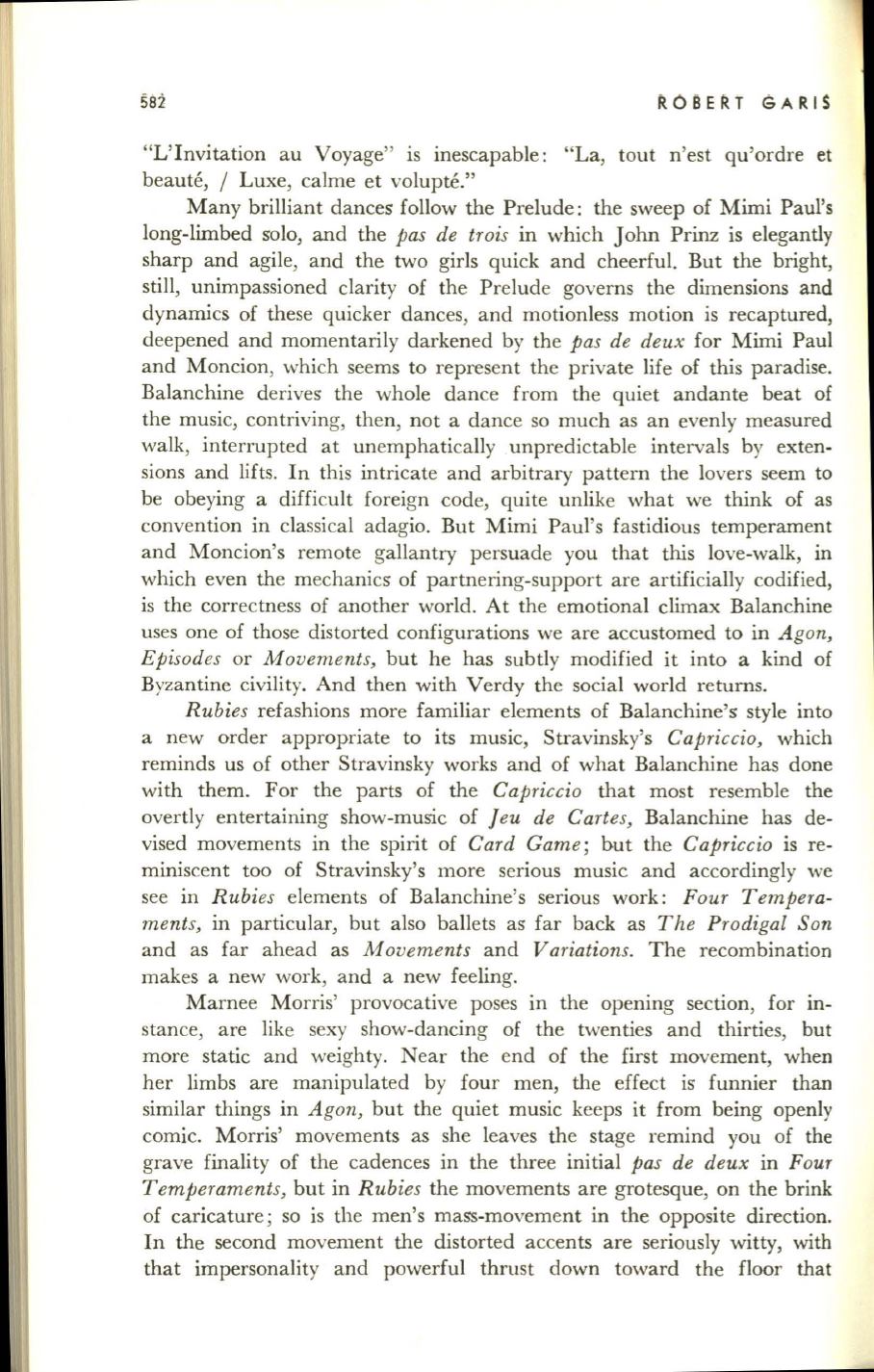
~OBERT
GARIS
"L'Invitation au Voyage" is inescapable: "La, tout n'est qu'ordre et
beaute, / Luxe, calme et volupte."
Many brilliant dances follow the Prelude: the sweep of Mimi Paul's
long-limbed solo, and the
pas de trois
in which John Prinz is elegantly
sharp and agile, and the two girls quick and cheerful. But the bright,
still, unimpassioned clarity of the Prelude governs the dimensions and
dynamics of these quicker dances, and motionless motion is recaptured,
deepened and momentarily darkened by the
pas de deux
for Mimi Paul
and Moncion, which seems to represent the private life of this paradise.
Balanchine derives the whole dance from the quiet andante beat of
the music, contriving, then, not a dance so much as an evenly measured
walk, interrupted at unemphatically unpredictable intervals by exten–
sions and lifts. In this intricate and arbitrary pattern the lovers seem to
be obeying a difficult foreign code, quite unlike what we think of as
convention in classical adagio. But Mimi Paul's fastidious temperament
and Moncion's remote gallantry persuade you that this love-walk, in
which even the mechanics of partnering-support are artificially codified,
is the correctness of another world. At the emotional climax Balanchine
uses one of those distorted configurations we are accustomed to in
Agon,
Episodes
or
Movements,
but he has subtly modified it into a kind of
Byzantine civility. And then with Verdy the social world returns.
Rubies
refashions more familiar elements of Balanchine's style into
a new order appropriate to its music, Stravinsky's
Capriccio,
which
reminds us of other Stravinsky works and of what Balanchine has done
with them. For the parts of the
Capriccio
that most resemble the
overtly entertaining show-music of
leu de Cartes,
Balanchine has de–
vised movements in the spirit of
Card Game;
but the
Capriccio
is re–
miniscent too of Stravinsky's more serious music and accordingly we
see in
Rubies
elements of Balanchine's serious work:
Four Tempera–
ments,
in particular, but also ballets as far back as
The Prodigal Son
and as far ahead as
Movements
and
Variations.
The recombination
makes a new work, and a new feeling.
Marnee Morris' provocative poses in the opening section, for in–
stance, are like sexy show-dancing of the twenties and thirties, but
more static and weighty. Near the end of the first movement, when
her limbs are manipulated by four men, the effect
is
funnier than
similar things in
Agon,
but the quiet music keeps it from being openly
comic. Morris' movements as she leaves the stage remind you of the
grave finality of the cadences in the three initial
pas de deux
in
Four
Temperaments,
but in
Rubies
the movements are grotesque, on the brink
of caricature; so is the men's mass-movement in the opposite direction.
In the second movement the distorted accents are seriously witty, with
that impersonality and powerful thrust down toward the floor that


